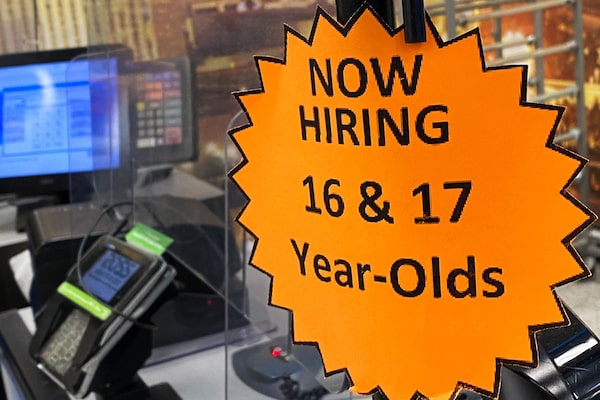
U.S. job numbers surged unexpectedly in January while wages rose and inflation fell further.PATRICK T. FALLON/AFP/Getty Images
John Rapley is a political economist at the University of Cambridge and the managing director of Seaford Macro.
Canada’s recent blowout employment report, which revealed booming job creation and rising wages, is of a piece with recent data from other developed economies. Even Britain, widely derided as the sick man of Europe, is still enjoying strong employment numbers and higher wages.
Yet economies have been slowing – Britain’s already flatlining. So the persistently robust health of job markets stands apart from the overall state of affairs, leaving experts to scratch their heads. About the only thing that makes sense to them is that, in line with cooling economies, inflation is falling. But, set against the booming job market, even that turns out to defy the models.
Perhaps there’s something wrong with the models we use. The traditional relationship between economic activity, wage growth and inflation does not seem to hold any more.
For decades, it’s been assumed that inflation is a function of excess demand, that excess demand results from an overheated economy and that the main indicator of an overheated economy is low unemployment. So when inflation surged last year, leading voices in the economics profession said I told you so: The Biden administration’s big fiscal stimulus package had supercharged the economy, and the only solution was for central banks to raise interest rates until millions of workers joined the unemployment lines, cooling demand. Central banks took their advice. Lo and behold, as if on cue, inflation has begun falling.
But not for the reasons they expected. On the contrary, the long queues aren’t outside unemployment offices but at job fairs, where employers are scrambling to find workers. So if unemployment isn’t cooling demand, something else must be. It could be that it’s time to go back to the drawing board. That’s, however, usually the last thing economists like to do, so instead they tend to retrofit their models to the data – or they recalibrate them, to use trade jargon.
In this case, the get-out-of-jail card lies in the real wage data. While there are plenty of jobs, wages are rising more slowly than inflation. That means real earnings are falling, showing the job market to be less robust than the headline figures suggest. But even this argument looks less convincing by the day – because real wages are improving even as inflation declines.
Some recent research I did with colleagues uncovered something we called the Carl Lewis effect. Named after the famously slow-starting sprinter who could nevertheless maintain his peak speed for a longer stretch of the race, causing his rivals to fall behind as they approached the finish line, we noticed the erosion of real wages resulted when last year’s inflation shot ahead of wage growth. But soon afterward, wage growth sped up. And while inflation is now falling, wage growth is maintaining its pace, gradually narrowing the real wage differential. On current trends, real wages will turn positive later this year.
So if employment and wages aren’t cooling demand, what is? There’s now evidence that the link between employment and inflation may not be as strong as we once supposed, and moreover that the Biden stimulus actually had little effect on inflation. In the G7 economies, there’s actually an inverse relationship between wages and inflation at the moment, with inflation falling fastest where wages are rising the most.
Instead, record profit margins, inflated asset prices and competition-limiting corporate concentration seem to have been the key drivers of last year’s inflation. And now, as profit margins get squeezed and asset prices fall, the reverse is happening. In line with that reasoning, data from the U.S. suggests that richer households have been trimming their spending more rapidly than those lower down the income scale.
That’s not what we were told to expect. For a while now, central bankers have been singing from the same song sheet, saying that inflated asset prices – like Canada’s housing bubble – weren’t their concern because their effects didn’t show up in the real economy and that workers had to temper their expectations if inflation was going to fall. What the data seems to suggest is that on both counts central banks have had it all wrong.
But then, the failing isn’t theirs, but in the models they’ve been using. This may be a case of a central bank doing the right thing for the wrong reasons. Rising interest rates are, at least in relative terms, squeezing owners more than workers, and their weakening demand may be driving down inflation. But while tight monetary policy seems to be working, the fact it isn’t working through the anticipated channels suggests that economists need to revisit their models. Economics, it turns out, may be less science than art.